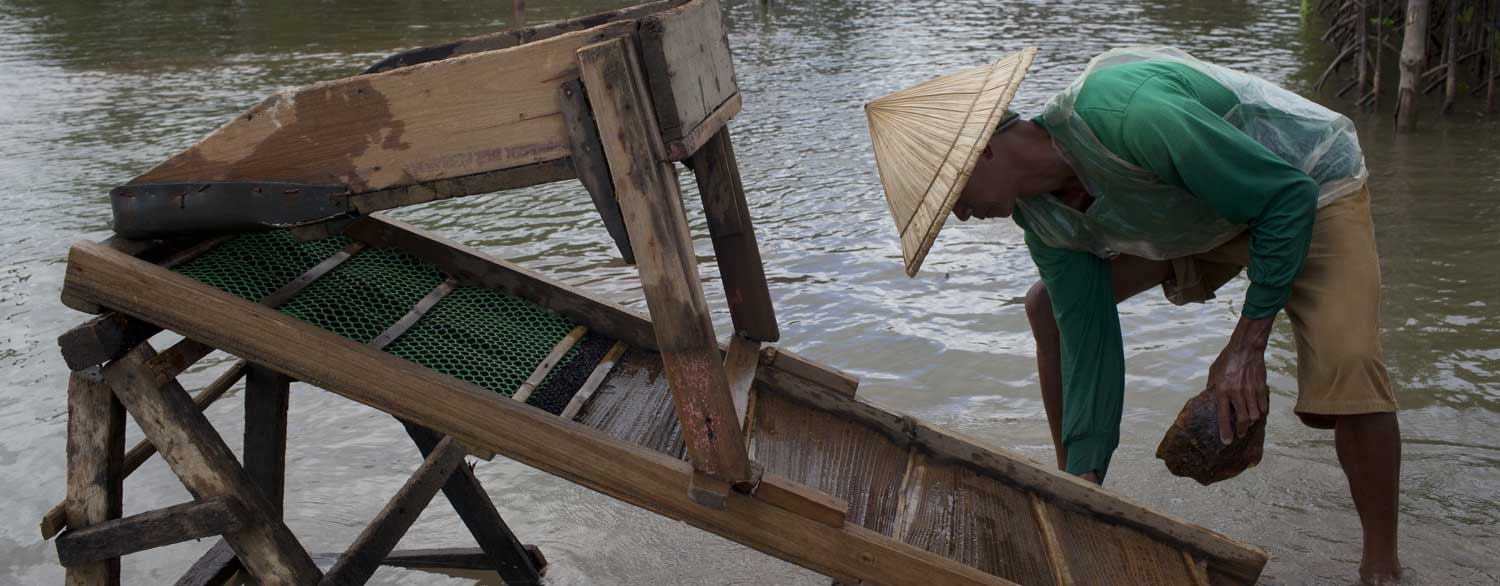
Photo: Luis Liwanag/BAN Toxics
Since the context of ASGM activities in the Philippines is largely poverty-driven, and given the issues at play, any proposed intervention needs to be grounded on strong community participation, good governance and empowerment.
BAN Toxics’ range of intervention thus far aims to fully involve ASGM communities in advocating lasting solutions and overall improvement of targeted ASGM areas.
We believe that by directly working with ASGM communities, change and lasting solutions to problems and challenges can be achieved. Our years of experience on the ground has informed us that participation of individuals, marginalized communities, local government units and civil society steers this process much more effectively.
Creating a favorable venue for change
With the prevailing atmosphere of distrust between the government on one hand and ASGM miners on the other, it is critical that an effective model or pilot for change can be presented.
BAN Toxics played a critical role in bringing miners, national and local government officials, large-scale mining interests and other stakeholders to the table to negotiate a 10-year strategy on eliminating mercury in Philippine ASGM.
BAN Toxics also leveraged its success in the National Plan development and supported projects on the ground with ASGM communities.
Before any element of our community intervention could be rolled out, critical stakeholders at the national government level, as well as miners and their representatives needed to be comfortable with the entity they were eventually interacting with. Thus, a critical layer for the change paradigm the project was working on is the establishment of a safe and neutral space where miners and other stakeholders can work together. This space was provided by BAN Toxics.
In addition we advanced project goals in the communities through interactions with miners that were not judgmental and which seek to develop the miners and the community instead of considering them as mere research subjects or adversaries.
This strategy component addresses issues of mistrust, builds partners on the ground, improves communication and empowers miners to implement the change.
Miner to miner exchange
The miner to miner exchange is a venue for training and exchange of experiences. The miner to miner exchange also had a special role: a source of primary technical information and as a means to communicate at the level of local miners. An integral element in the change process are the ASGM miners who play an important role.
This strategy component aimed to address the following: the need to provide information on mercury-free alternatives, improve communications and eliminate distrust.
Peer to peer approach
The rationale behind this strategy is to create a supporting force within the community that can complement the mercury-free transition efforts.
To operationalize the strategy, we developed targeted awareness raising activities at the community level on the health and environmental impacts of mercury pollution. This intervention focused on rural health care workers, teachers, miners, women, youth and children in the community.
Building partnerships
Partnerships were established with the creation of the Philippine National Coalition for Artisanal and Small-scale Miners. The formation, strengthening and alliance building of ASM at the local and regional level are envisioned to address common issues and challenges among ASGM communities. Thus far, the sharing of experiences and strategies resulted into various information exchanges on mercury-free mining, ASGM organization and alliance building and the participation of women miners in ASGM processes.
Building capacities of local civil society organizations (CSOs)
The limited number of development organizations providing relevant and effective support to the ASGM sector is seen as an impediment to providing efficient and relevant support for ASGM communities to become self-reliant and sustainable communities in the long term.
The collaborative partnerships among CSOs can scale up learning insights of the project with other ASGM communities at the local and international level.
Lobbying for favorable ASGM legal frameworks
BAN Toxics provided greater opportunity for ASGM communities to assess needed support in terms of formalizing ASGM communities, managing mercury-use in ASGM and proactive provision on development interventions as needed.
The rationale behind the development of a favorable ASGM legal framework is to support the sustainability of a mercury-free transition and to institutionalize the policy against mercury use in the project areas.
For example, assisted ASGM communities were able to pass an ordinance prohibiting mercury use. One example is the municipality of Jose Panganiban, Camarines Norte which developed a local ordinance on mercury use and ASGM miner support in their area.
To further strengthen the institutionalization of the mercury-free method and the sustainability of results, BAN Toxics also integrated legal policy efforts at the international level to complement its local initiatives. We participated in the negotiations for the Minamata Convention on Mercury and used the understanding of the ASGM situation in the Philippines, including those gleaned from the project, to push for strong international obligations on eliminating mercury-use in ASGM.
